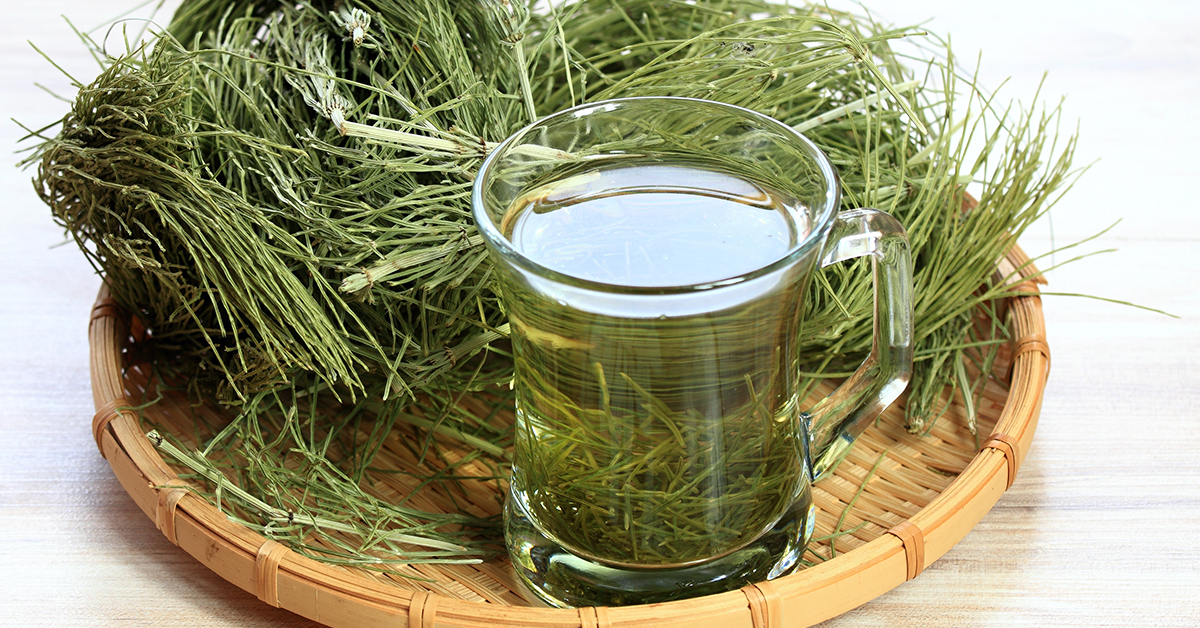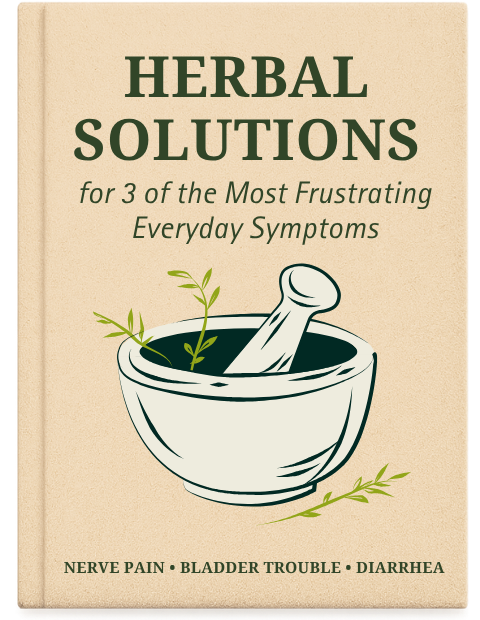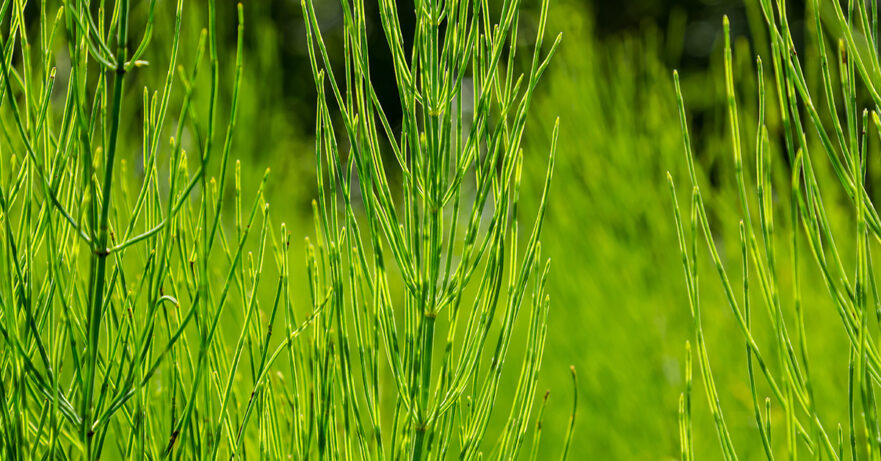In this monograph about horsetail:
📖 Introduction | 🌱 Botanical Description | 📜 Traditional Uses | 🔍 Phytochemistry | ✨ Applications and Uses | 🛡️ Safety Profile
📖 Introduction
Horsetail (Equisetum arvense) is an herbaceous perennial plant known for its abundance of minerals, mainly silica, which is used to support bone health. Valued since ancient Roman and Greek times, horsetail has been employed in traditional medicine primarily for its diuretic and abrasive properties.
| English Name | Horsetail |
| Latin Name | Equisetum arvense |
| Parts Used | Stem |
| Traditional Uses | Diuretic, wound healing, joint health |
| Herbal Actions | Diuretic, astringent, anti-inflammatory |
🌱 Botanical Description
Scientific Classification
Equisetum arvense belongs to the Equisetaceae family.
Physical Characteristics
This plant features jointed, hollow stems and scale-like leaves fused into sheaths. The shoots emerge as green, sterile stems and brownish, fertile stems that release spores.
Natural Habitat and Cultivation Details
Horsetail thrives in wet, sandy soils often found near rivers, streams, and marshes. It is pervasive across North America, Europe, and Asia, growing as a weed that can be difficult to eradicate due to its extensive underground rhizome network.
📜 Traditional Uses
Historically, horsetail has been used to treat various ailments due to its mineral content and as an abrasive cleaner. Traditionally, it was used to support urinary and renal health, strengthen bones, nails, and hair, and heal wounds.

🔍 Phytochemistry (Active Constituents)
Horsetail’s notable components include:
- Silicic acid: Silica is present as silicic acid, a form believed to support bone health, though direct clinical evidence is limited.
- Saponins: Natural compounds known for their diuretic and anti-inflammatory properties.
- Flavonoids: Antioxidants that potentially support vascular health, though further studies should validate specific effects in horsetail.
✨ Applications and Uses
In herbal medicine, horsetail is utilized for:
- Bone health: The silica in horsetail is suggested to help form and maintain strong bones, which is beneficial for conditions like osteoporosis, though more evidence is needed.
- Diuretic properties: It increases urine output to help flush the kidneys and urinary tract.
- Hair, skin, and nail health: Silica’s role in collagen formation suggests potential benefits for strengthening hair and nails and improving skin health, pending more definitive research.
- Wound healing: Traditionally used for wound healing, supported by its antimicrobial properties; however, more clinical research is needed to confirm these effects.
🛡️ Safety Profile
Generally, horsetail is considered safe when used in moderation.
However, long-term use is not recommended due to its thiaminase activity, which can break down thiamine or vitamin B1, especially for those at risk of or currently experiencing B1 deficiency.
Due to potential risks associated with its high silica content, it should not be used by pregnant or nursing women or those with kidney disorders without medical supervision.
Additionally, horsetail may interact with diuretics and medications for diabetes and should be used cautiously under the guidance of a healthcare provider.
📃 Related Posts
🌱 Related Herbs

